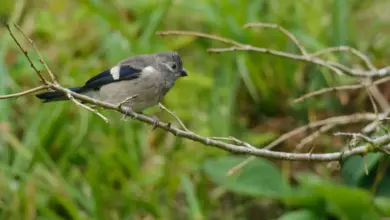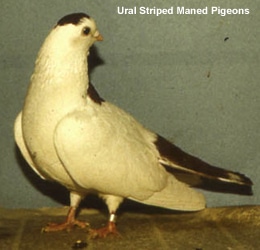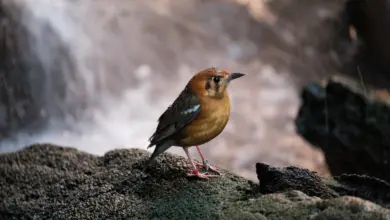Hummingbirds found in Wyoming, USA
Hummingbirds found in the USA (by U.S. State) … Canada … Mexico … Puerto Rico … Jamaica … Honduras
Hummingbird Information … Hummingbird Species Photo Gallery
Following listed (with photos) are hummingbirds found in Wyoming.
Migratory hummingbirds rarely arrive before May and they leave in August and September.
Anna’s Hummingbird, Calypte anna – Rare / Accidental.
One of the larger and the most vocal hummingbirds in the United States, where it is the only species to produce a song; specifically the males produce a complex series of scratchy noises, sounding like a sharp “chee-chee-chee; when moving from flower to flower, they emit toneless “chip” vocalizations. All other hummingbirds in the United States are mostly silent.
They are well known for their territorial behavior; the male makes elaborate dive displays at other birds and sometimes even at people. At the bottom of their dives, they produce high-pitched loud popping sounds with their tail feathers.
Males have glossy dark rose-red throats and crowns, which may appear black or dark purple in low light. The underside is mostly greyish; and the back metallic green.
Females have light grey chests with white and red spotting on the throat, greenish back and white tipped tails.
They resemble the Costa’s Hummingbirds, but the male’s Costa’s Hummingbird’s gorget (throat feathers) is longer than that of the Anna’s. They are larger than the Rufous Hummingbirds and lack the rusty coloration of the Rufous Hummingbirds.
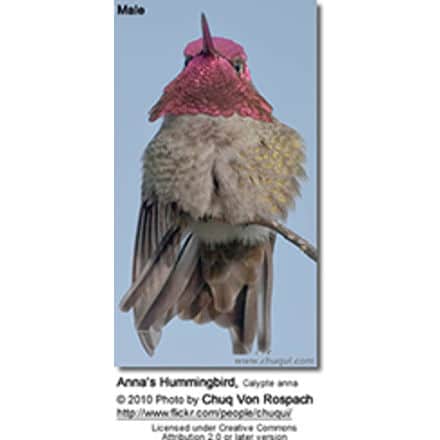
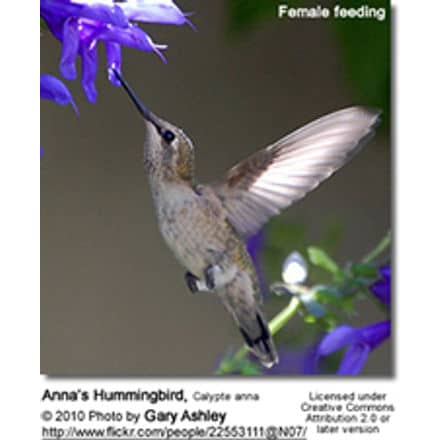
Black-chinned Hummingbird, Archilochus alexandri – Rare in winter, spring, and fall in all regions. Found in open woodlands, parks and gardens
The male has a black, shimmering throat with a purple edge and pale feathers below that create a collar. However, unless the light is just right, the head looks all black. His back is green and there are some green feathers covering the chest.
The female is pale below (sometimes with a slightly speckled throat) and her back is green.
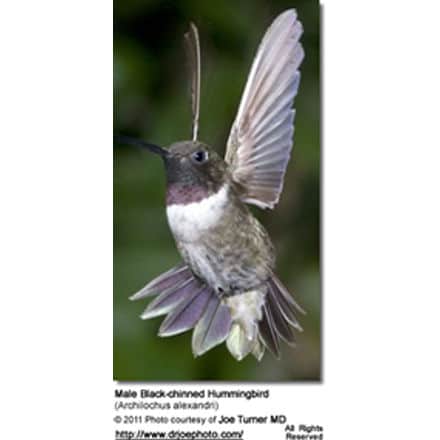
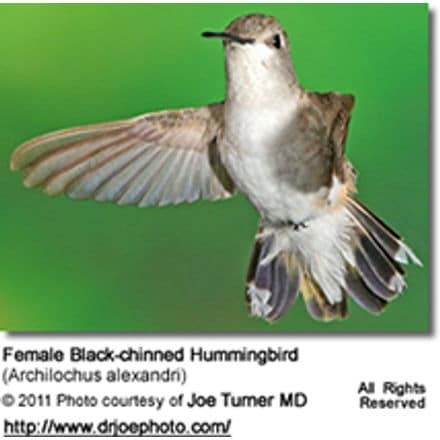
Broad-tailed Hummingbird Selasphorus platycercus – Accidental / Vagrant – Very Rare Winter Visitor – Occur in late fall, winter, and early spring, mainly in gardens, along forest edges and at hummingbird feeders.
Males can most easily be identified by their iridescent, rose-red throats, white chest feathers and metallic green back and crown and their rounded tails. The males’ tails make whistling noises in flight.
Females lack the flashy throat patch of the male and are mostly pale below. Their white-tipped outer tail feathers are rust-colored close to the body and blackish in the center; the tail feathers in the center range from green to blackish.
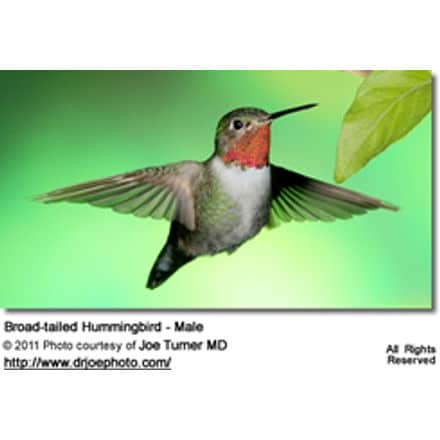
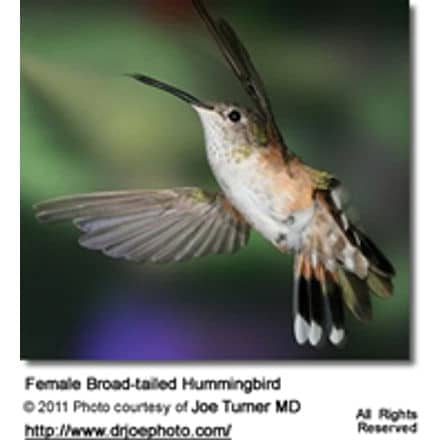
Calliope Hummingbirds Stellula calliope – Accidental / Vagrants – Occur in late fall, winter and early spring in Gulf Coast, Inland Coastal Plain, as well as the Mountain regions.
The smallest breeding bird in North America. They are most easily confused with the Rufous Hummingbirds and the Broad-tailed Hummingbird.
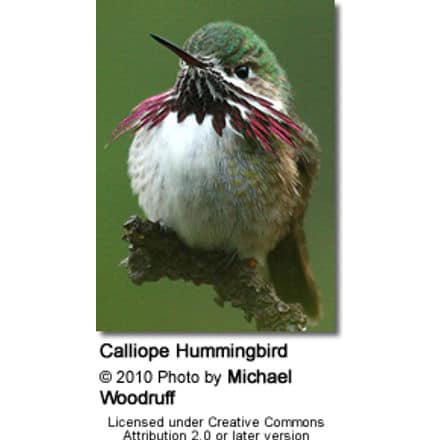
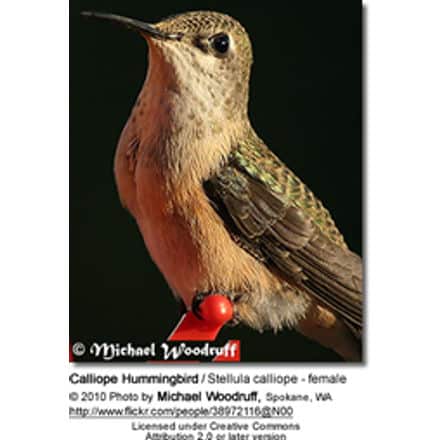
Magnificent or Refulgent Hummingbirds (Eugenes fulgens) – Accidental Vagrants.
These are large hummingbirds and can often be identified by their size alone.
The male has a metallic green throat and a black chest. His forehead and crown are purple and the back is dark green.
The female plumage is less bright. Her chest is solid grey. Her back and crown are olive green. Her tail feathers are pearl-grey tipped.
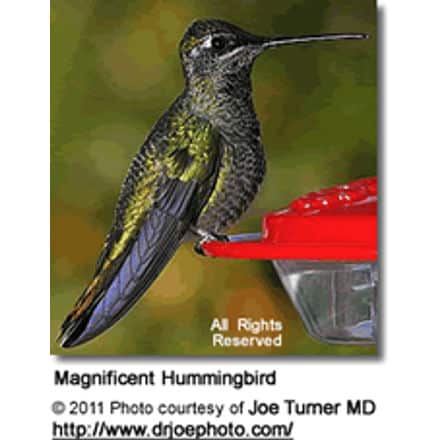

Ruby-throated Hummingbird, Archilochus colubris – Rare– Usually arrive in the first week of May, with males usually being the first to show up to stake out their feeding territories. Most leave toward the end of September. Males usually depart first, and females and the young follow about two weeks later.
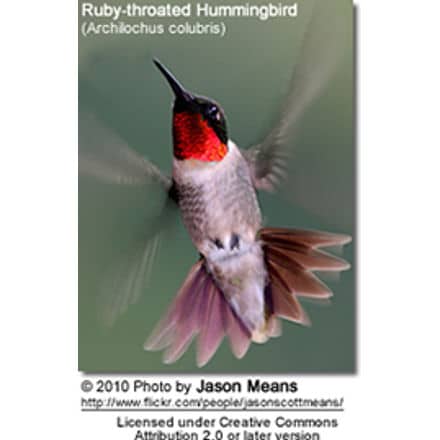
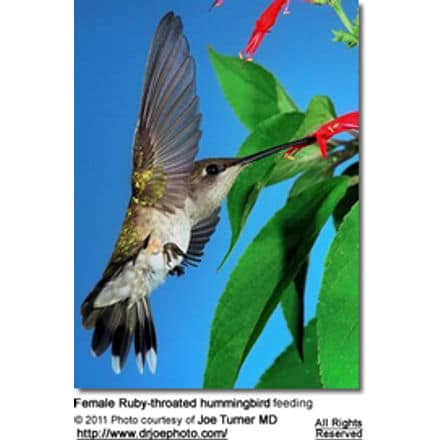
Rufous Hummingbird Selasphorus rufus — Accidental l Visitor … Like the Ruby-throated Hummingbirds, they usually arrive in the first week of May, with males usually being the first to show up to stake out their feeding territories. Most leave toward the end of September. Males usually depart first, and females and juveniles follow about two weeks later.
These hummingbirds are usually found in gardens and at feeders. These birds are fearless, and are known for chasing away other hummingbirds and even larger birds, or rodents away from their favorite nectar feeders and flowers.
Males can easily be identified by their glossy orange-red throats.
Females have whitish, speckled throats, green backs and crowns, and rufous, white-tipped tail feathers.
Rufous Hummingbird versus the similar Ruby-throated Hummingbird (Identification)

